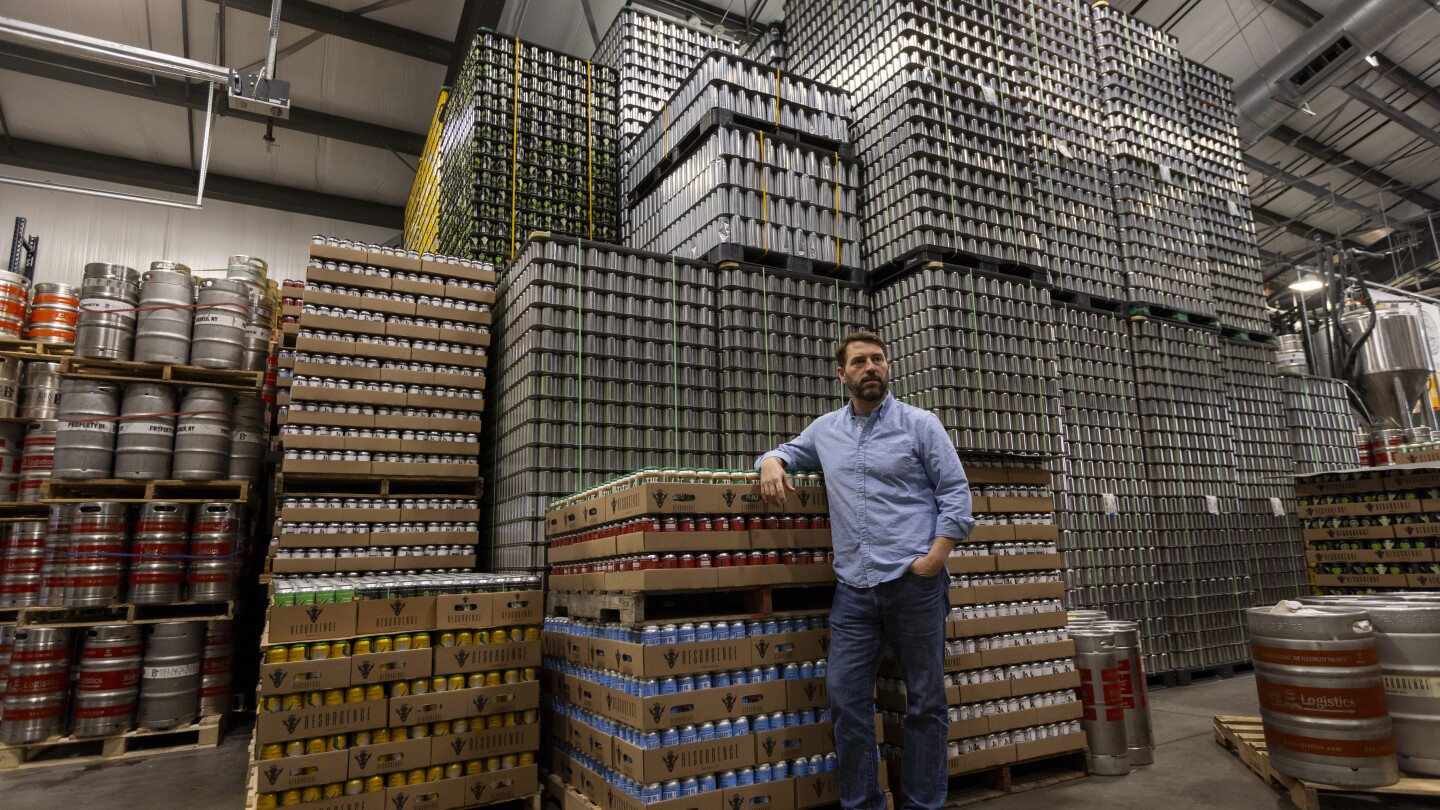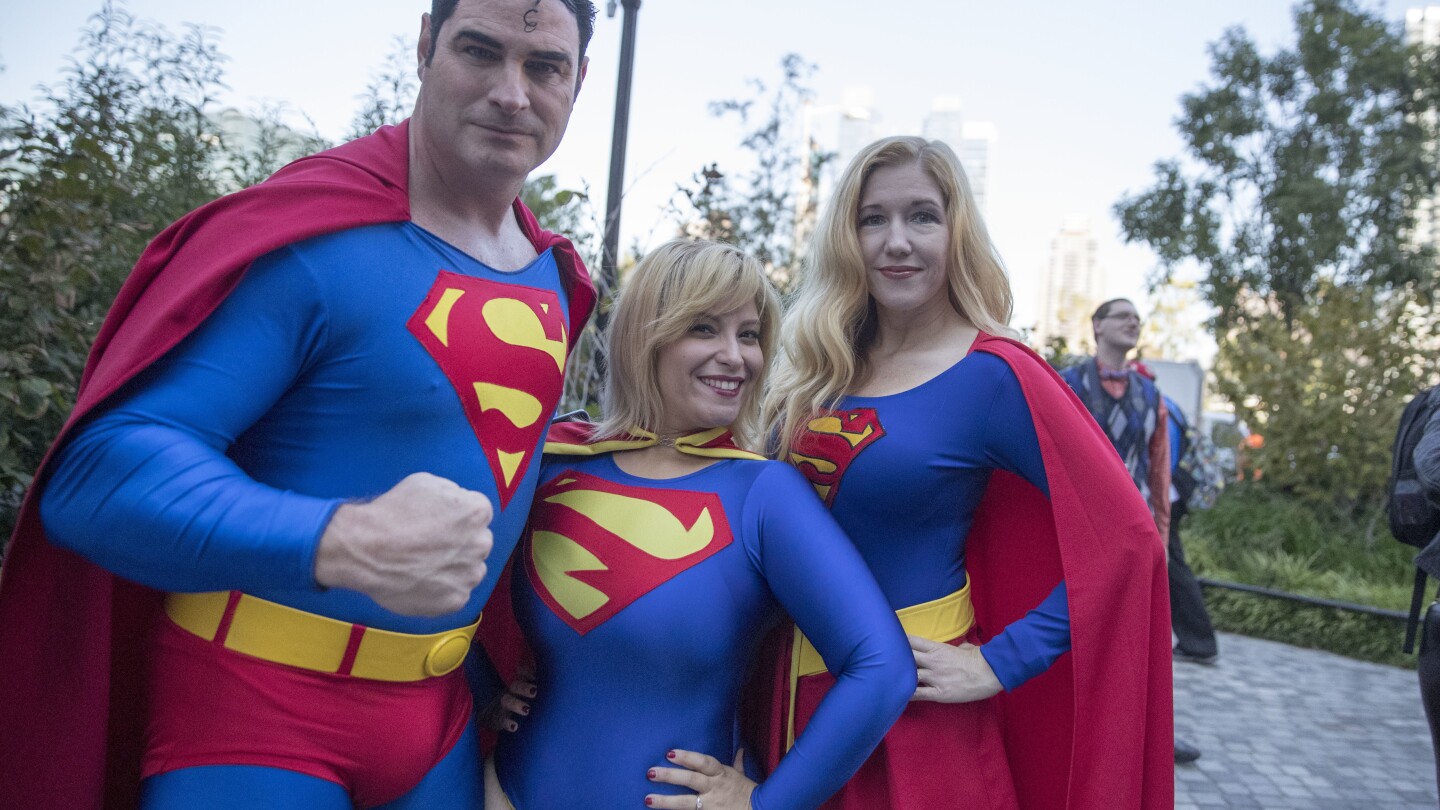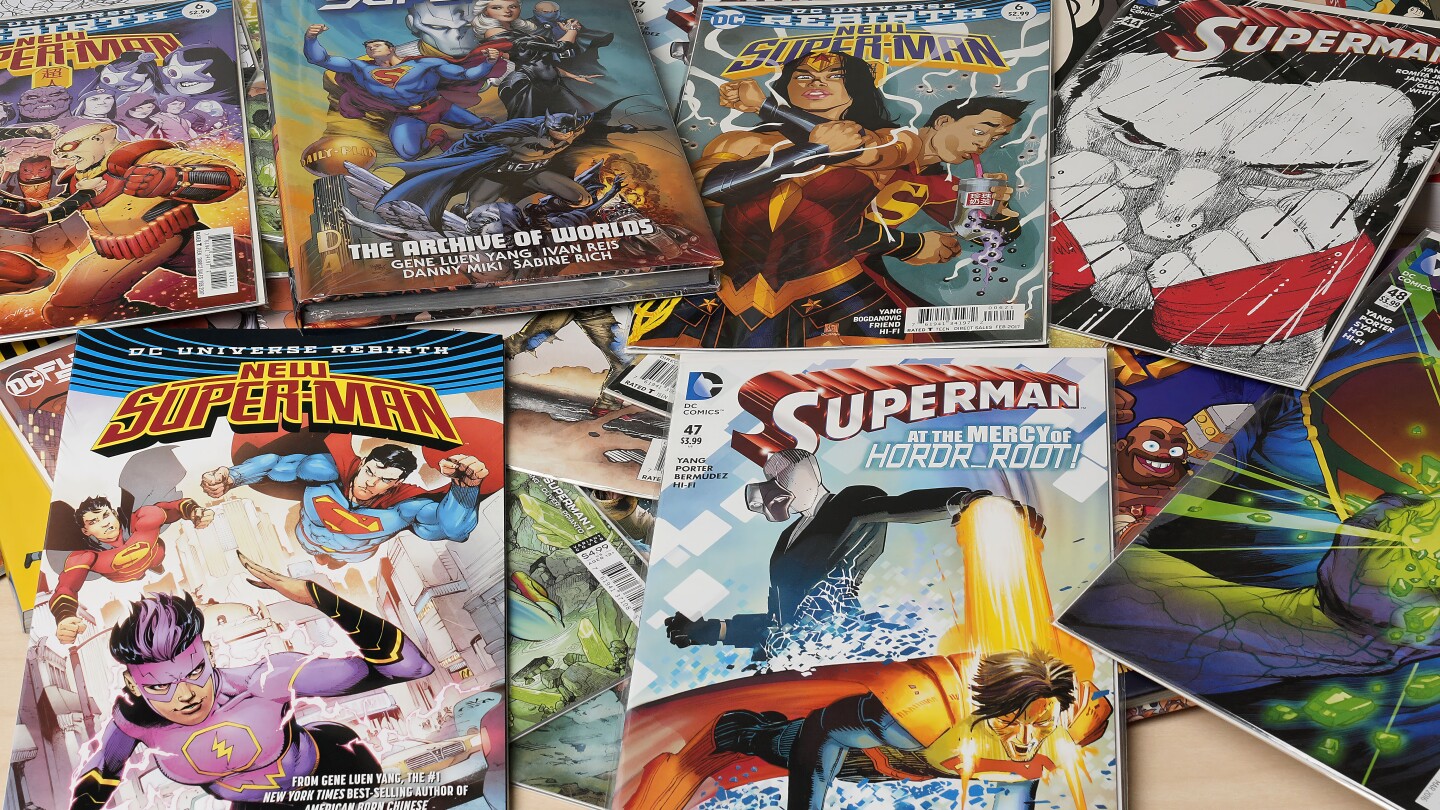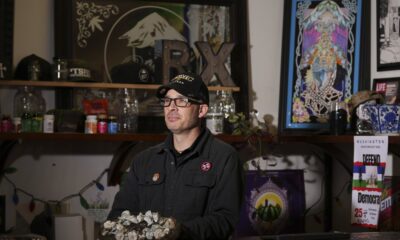Lifestyle
From soup cans to airplanes, steel and aluminum are a fundamental part of American life

Steel and aluminum are ubiquitous in Americans’ lives. A stainless steel refrigerator holds aluminum soda cans. A stainless steel drum tumbles inside an aluminum washing machine. They’re the metals used in cars and airplanes, phones and frying pans, skyscrapers and zippers.
That’s why President Donald Trump’s 25% tariffs on all steel and aluminum imports — which went into effect Wednesday — could have widespread impact on manufacturers and consumers.
Here are some of the industries and products that rely on aluminum and steel:
Construction
The construction industry uses about one-third of all U.S. steel shipments, more than any other industry, according to the Council on Foreign Relations. The industry depends on a global supply chain to build everything from airports to schools to roads, according to Associated Builders and Contractors, a trade group with more than 23,000 members.
The group says some contractors were able to lock in prices on steel or aluminum ahead of the tariffs. But if they are prolonged, the import taxes will ultimately raise prices at a time when the construction industry is already struggling with higher costs for labor and materials. And uncertainty around the tariffs will make it less likely that companies will commit to big building projects, the group said.
Annie Mecias-Murphy is the co-owner and president of JA&M, a contractor for commercial buildings based in Pembroke Pines, Florida. Some of the main materials her company uses are rebar, or reinforced steel, and post-tension cables, which reinforce concrete after it’s poured.
“In attempts to get ahead of the tariffs, we do try to lock in our prices and work with our trade partners and clients on different strategies,” Mecias-Murphy said. “But ultimately, the rising costs make it difficult for small business owners like myself to contemplate large-scale multi-year projects.”
Steel cans
Tin mill steel is used for a wide variety of packaging, from soup cans to hairspray. And the U.S. currently imports 70% of its tin mill steel, according to the Can Manufacturers Institute.
The institute said the more limited tariffs Trump imposed in 2018 resulted in the closure of nine tin mill lines in the U.S. as manufacturers shifted to other types of steel or simply shut down. As a result, only three U.S. tin steel lines remain open.
Mick Beekhuizen, the president and CEO of The Campbell Co., said in an earnings call last week that his company imports tin mill steel from Canada. Beekhuizen said Campbell is working with its suppliers to mitigate the impact of tariffs, but it may need to raise prices.
The Consumer Brands Association, which represents packaged food makers, said it’s urging the Trump administration to exempt aluminum and steel products that aren’t available in adequate quantities in the U.S. Otherwise, consumers will likely see higher grocery prices.
“We encourage the Trump administration to recognize the different needs of different U.S. manufacturing sectors,” said Tom Madrecki, vice president of supply chain resiliency at the Consumer Brands Association.
Autos
Most of Ford, GM and Stellantis’ steel and aluminum already comes from the United States, reducing the direct impact the companies would feel from higher duties.
But experts have warned that tariffs might mean the three Detroit automakers have to raise their prices. Domestic steel and aluminum producers will have to increase their capacity to meet demand or risk a short supply in the near term, making these products more expensive and driving up vehicle costs.
Another automaker who could feel the pain from tariffs: Elon Musk’s Tesla. During a January earnings call, Tesla Chief Financial Officer Vaibhav Taneja noted the uncertainty around tariffs.
“The imposition of tariffs, which is very likely, … will have an impact on our business and profitability,” Taneja said.
This could be detrimental to an already inflation-sensitive American car buyer. The average transaction price for a new vehicle was just over $48,000 last month, according to Kelley Blue Book.
And as with the steel and aluminum tariffs of Trump’s first term, automakers are likely to have to revisit their financial outlooks for the year as they brace for impact.
Appliances
Makers and sellers of products ranging from microwaves to dishwashers are considering how to navigate cost increases.
Some like Whirlpool, which produces 80% of what it sells in the U.S. domestically, appear to be more insulated from the tariffs. Whirlpool executives told analysts at an investor conference earlier this month that Whirlpool has locked in contracts for a minimum of one year for most of its raw materials, including steel.
But Abt, a family-owned appliance and consumer electronics store in Glenview, Illinois, received notices this week from manufacturers that said they would raise the suggested retail price of countertop products like espresso makers and toasters anywhere from 10% to 15% starting April 1, according to Richie Palmero, the store’s small appliance buyer.
Abt sells coffee makers that range from $100 to $500, as well as espresso makers priced from $1,000 to $5,000. Palmero said that putting another $250 on the price of a $2,500 espresso maker is a lot, but she said she doesn’t think sales will suffer significantly.
“I think customers would still buy it because it’s good quality,” she said. “But they might think about it. They might take longer to buy it. It might not be an impulse buy. I don’t think they’re going to go down to Mr. Coffee or a $20 coffee maker.”
Household goods
The Retail Industry Leaders Association said the compound effect of those import taxes, earlier tariffs on goods from China imposed during Trump’s first term and maintained by former President Joe Biden, and a new round slapped on Chinese products last month could be substantial.
The trade group, which represents major U.S. chains, asked its members to come up with a list of popular household items to illustrate how the multiple layers might add to the cost of finished products. The 20 entries included pushpins, trash cans, ladders, grills, paper towel holders, mixing bowls, wine racks, shower caddies, chicken coops and steel wool.
By the association’s calculations, the selected imports face a potential duty of 45% to over 70% when they go through U.S. customs. The amounts varied depending on where the products were made and if they already were subject to a base tax or a tariff from Trump’s first term. Portable griddles and tabletop grills from China, which had the highest starting duty, would get taxed at almost 75% of its value.
“Stacking tariffs on household goods will also raise costs on American families, millions of whom have struggled through the worst bout of inflation in 40 years,” Michael Hanson, a senior executive vice president at the Retail Leaders Industry Association, said in a Wednesday statement.
Aluminum cans
U.S. beverage companies use more than 100 billion aluminum cans each year, according to the Can Manufacturers Institute. Most of the thin rolled sheets of aluminum alloy that are used for cans are made in the U.S., but can makers do import a small percentage, the institute said.
The Brewers Association, which represents 9,500 independent U.S. craft beer makers, estimates that 10% of U.S. cans are made from Canadian aluminum. Aluminum tariffs will force small brewers to pay more for cans, the association said, even as steel tariffs drive up the cost of equipment like kegs and fermentation tanks.
But not all manufacturers are worried about aluminum tariffs. Molson Coors says it shifted production in recent years and now gets “almost all” of its aluminum for U.S. consumption from U.S. sources.
Coca-Cola Chairman and CEO James Quincey said during a recent earnings call that if aluminum cans get more expensive, Coke can shift to other materials like plastic bottles. Quincey told investors he didn’t want to exaggerate the cost of aluminum tariffs.
“You should not conclude that this is some huge swing factor in the U.S. business,” he said. “It’s a cost. It will have to be managed. It would be better not to have it relative to the U.S. business, but we are going to manage our way through.”
Aviation
Airplanes have a mixture of metal parts, from aluminum frames, wings and door panels to steel landing gear and engine parts. Many are extremely specialized and sourced from overseas.
The Aerospace Industries Association, which represents nearly 300 aerospace and defense companies, says tariffs put their industry — and national security — at risk.
“We are concerned about additional downward pressure on an already stressed American supply chain,” Dak Hardwick, the association’s vice president of international affairs, said. “We are investigating mitigation strategies that would minimize the impacts of new tariffs on our industry, and we hope to work with the Trump Administration to highlight the critical role we play in America’s economic prosperity, national defense and deterrence.”
___
AP Climate reporter Alexa St. John in Detroit contributed reporting.
Lifestyle
Sweets from the sky! A helicopter marshmallow drop thrills kids in suburban Detroit

ROYAL OAK, Mich. (AP) — It’s spring in Detroit — warm weather, a few clouds, and a 100% chance of marshmallow downpours.
The source? A helicopter zooming above the green lawn of Worden Park on Friday, unloading sack-fulls of fluffy treats for hundreds of kids waiting eagerly below, some clutching colorful baskets or wearing rabbit ears.
The children cheered and pointed as the helicopter clattered by on its way to the drop zone. Volunteers in yellow vests made sure kids didn’t rush in and start grabbing marshmallows until after the deluge was complete.
For anyone worried about hygiene, don’t fret. The annual Great Marshmallow Drop isn’t about eating the marshmallows — kids could exchange them for a prize bag that included a water park pass and a kite.
The marshmallow drop has been held for over three decades in the Detroit suburb of Royal Oak, Michigan, hosted by Oakland County Parks.
One toddler, Georgia Mason, had no difficulty procuring a marshmallow at her first drop, her dad Matt said.
“Probably the most exciting part was seeing the helicopters. But once we saw the marshmallows drop, we got really excited,” Matt Mason said.
“And, yeah, we joined the melee,” he said, “We managed to get one pretty easy.”
Organizers said 15,000 marshmallows were dropped in all.
The helicopter made four passes, dropping marshmallows for kids in three age categories: 4-year-olds and younger, 5-7-year-olds, and those ages 8 to 12. A drop for kids of all ages with disabilities came later in the day.
“We do it because it’s great for community engagement,” Oakland County recreation program supervisor Melissa Nawrocki said.
“The kids love it,” she continued. “The looks on their faces as they’re picking up their marshmallow and turning in the marshmallow for prizes is great.”
Lifestyle
AP report: Superman comics have religious and moral themes

Superman comics are not overtly religious. Yet faith and morality have been baked into this superhero character who was born Kryptonian, raised Methodist and created by two young Jewish men in 1930s Cleveland.
Superman’s character has been portrayed in the mold of Christ and Moses given how he constantly upholds the ideals of self-sacrifice, powerful leadership and compassion. While scholars, comic book writers and fans alike are struck by the religious undertones in Superman comics, they all agree that what sets Superman apart is his ability to bring hope in a hopeless world.
Superman Day and the ‘Superman’ summer movie release
Friday (April 18) marks the 87th anniversary of the original superhero’s birth. It also is the date Superman made his debut in an Action Comics issue.
There is much excitement in the Superman fanverse this year because of the much-anticipated ‘Superman’ movie directed by James Gunn, starring David Corenswet, the first Jewish actor to play Superman in a major film.
On his Instagram page on April 18, 2024, Gunn shared a photo of himself, Corenswet and Rachel Brosnahan who plays Lois Lane in the upcoming film, reading among several comic books, a reproduction of Action Comics #1 — the very first one featuring the Man of Steel.
In his Instagram post, Gunn also paid tribute to the superhero, saying: “He gave us someone to believe in, not because of his great physical power, but because of his character and determination to do right no matter what.”
Gunn’s film promises a return to a version of a vulnerable Superman who is rooted in values espoused by most faiths — goodness, compassion and hope.
Superman’s Jewish roots
Samantha Baskind, professor of art history at Cleveland State University, is Jewish and sees numerous parallels between Superman’s origin story and the history of Jews.
She says Superman’s solitary flight from Krypton in a small spacecraft is reminiscent of how Moses’ mother placed him in a papyrus basket and left him on the Nile, seeing it as his best chance of survival.
Some also compare Superman’s backstory to the Kindertransport, she said, referring to a humanitarian rescue program that transported nearly 10,000 children, mostly Jewish, from Nazi-controlled territories to Great Britain in 1938 and 1939. In Superman’s Kryptonian name, Kal-El, chosen by his original Jewish creators Jerry Siegel and Joe Shuster, the “El” in Hebrew connotes God.
“There’s also the thinking that Siegel and Shuster created Superman because they were these two, skinny, young Jewish men who couldn’t go out and fight Hitler, but Superman fought Nazis on the cover of their comic books,” Baskind said.
In some early editions, Superman held Hitler by his Nazi uniform as he begged for mercy.
Strong appeal to diverse groups
Superman is relatable to diverse populations regardless of religion, race or ethnicity.
Gene Luen Yang, who has written several Superman comics, sees his own experience as a Chinese American mirrored in Superman’s story — caught between two worlds and two cultures. Yang says he had one name at home and another at school, just like Superman. So, even though he is a practicing Catholic, Yang says he relates more to Superman’s Jewish roots.
Despite the religious undertones, Superman also appeals to those who are religiously unaffiliated, said Dan Clanton, professor of religious studies at Doane University in Nebraska, adding that the superhero’s story “truly encapsulates American civil religion.”
Neal Bailey, a longtime contributor to Superman Homepage, a fan site, is an atheist. He views Superman as a “philosophical pragmatist” with the ability to solve the most complex problems with the least amount of harm.
“He actually goes beyond religion to see our commonalities,” Bailey said. “Superman wouldn’t care about people’s religious beliefs. He would care more about whether they are living up to their human potential.”
Superman inspires humans to do better
Grant Morrison, one of the best-known writers of Superman comic books, said in a 2008 interview that humans become what they imitate, which is why he made Superman an inspirational character.
Superheroes have received less-than-flattering treatment in recent films and television shows. For example, in “The Boys,” a comic book turned Amazon Prime series, the Superman-like character, Homelander, is a government-sponsored hero whose smiling exterior conceals the heart of a sadist. Gunn’s Superman is expected to change that trajectory with a superhero who will reinforce the character’s core value of preserving life at any cost.
An altruistic view of Superman can be found in the recently concluded “Superman & Lois” television series on the CW Network in which after defeating Lex Luthor in a final battle, the couple settles down in a small town and starts a foundation to help others.
“I didn’t just want to be a hero that saves people,” the Superman character played by Tyler Hoechlin says in an epilogue to the series. “I wanted to connect with them. To change their lives for the better.”
___
Associated Press religion coverage receives support through the AP’s collaboration with The Conversation US, with funding from Lilly Endowment Inc. The AP is solely responsible for this content.
Lifestyle
Fans of Superman relate to comic’s religious and ethical themes

Superman was born Kryptonian, raised Methodist and sketched into existence by two Jewish teens in 1930s Cleveland. Faith and morality are his DNA.
There are no overt religious references in Superman comics. But over eight decades, he’s been viewed as a divine entity, a savior figure — his sacrifice Christ-like, his will to lead as strong as Moses parting the Red Sea, and his compassion akin to a bodhisattva, an enlightened being who guides Buddhists on the spiritual path.
While scholars, comic book writers and fans alike are struck by the religious undertones in Superman comics, they say what separates Superman from the ever-growing pack of superheroes is his singular ability to bring hope in a hopeless world.
James Gunn’s ‘Superman’ sparks conversation
As fans celebrate Superman Day on Friday, marking the 87th anniversary of the original superhero’s birth, they are also eagerly anticipating James Gunn’s film “Superman” set for release on July 11. This version starring David Corenswet, the first Jewish actor to play Superman in a major film, promises a return to a version of a vulnerable Man of Steel who is rooted in values espoused by most faiths — goodness, compassion and hope.
The film has sparked a conversation about the place of Superman in the world and his personal code of ethics after several recent depictions of superheroes as anti-heroes. Corenswet said in a recent interview to Fandango that what captivates him about Superman is how he chooses to see good in people and not dwell on the negative.
“Why think about all the terrible things when we can focus on the good things we did today?” he said.
In the same interview, Gunn said his Superman will reinforce the character’s core value of preserving life at any cost.
“He believes that the sanctity of life is of the utmost importance,” Gunn said, noting the contrast with Superman’s archnemesis Lex Luthor, who values scientific advancement over life.
Symbol of hope and positive masculinity
It was precisely this benevolent, hopeful version of Superman that inspired Robert Revington, who teaches at the Vancouver School of Theology at the University of British Columbia, to go skydiving in a Superman costume on his 28th birthday. And yet Revington, a Christian, balks at Christ-like portrayals of his favorite superhero.
“I like Superman and I like Jesus,” he said. “I don’t necessarily want to conflate the two. To me, the best depiction of Superman is as a symbol of hope.”
Revington also sees Superman’s relevance today as “an example of positive masculinity.”
“He’s this version of strong, but compassionate masculinity, which several prominent figures don’t necessarily embody,” he said.
Revington and many others’ beloved iteration of Superman appeared in “All-Star Superman,” a 12-issue series published by DC Comics between 2005 and 2008. The superhero saves a young person who is about to take their own life with the endearing message: “You are stronger than you think you are.”
Grant Morrison, who wrote those comics, has said his view of Superman was shaped by Giovanni Pico della Mirandola’s “Oration On The Dignity of Man,” which argues that humans ought to be more virtuous than angels.
Superman speaks to our better angels
Humans, Morrison said in a 2008 interview, become what they imitate, which is why he made Superman an inspirational character.
“We live in the stories we tell ourselves,” he told Newsarama, a comic book website, and can choose to be “the astronaut or the gangster. The superhero or the super villain. The angel or the devil. It’s entirely up to us.”
As a result, said Matthew Brake, founder and editor of Pop Culture and Theology, Superman “is an idea that can inspire us to be our best selves.”
Superman’s character is also shaped by his upbringing as a Kansas farm boy, raised by kindly parents — Jonathan and Martha Kent. They are portrayed as Methodists in the comics.
Superheroes, in recent decades, have received less-than-flattering treatment. In “The Boys,” a comic book turned Amazon Prime series, the Superman-like character, Homelander, is a government-sponsored hero whose smiling exterior conceals the heart of a sadist.
“Invincible,” a comic turned television series from Robert Kincaid, author of the “Walking Dead,” features Omni-man, a Superman-like character who turns out to be an alien invader bent on conquest. The main character, Invincible, is Omni-man’s son, and must choose between protecting the Earth or taking his father’s side.
“Dune,” the famed sci-fi book adapted into blockbuster movies, warns of superheroes’ frailty
“Heroes are painful, superheroes are a catastrophe,” Dune’s author Frank Herbert once wrote. “The mistakes of superheroes involve too many of us in disaster.”
A relatable superhero
But Superman has cemented his place in pop culture not just as a beacon of hope, but also as a character relatable to many, regardless of race or ethnicity.
Gene Luen Yang, who has written several Superman comics, is best known for his 2020 graphic novel “Superman Smashes the Klan,” a story about a Chinese American family moving to Metropolis in 1946 and facing discrimination from the Klan. The story follows the Lee family as they confront the white supremacist group with Superman’s help.
Yang sees his own experience as a Chinese American mirrored in Superman’s story.
“The idea that you have to hide who you are or that you’re caught in between cultures,” he said. “Superman has two names — Kal-El, his Kryptonian name and Clark Kent, his American name. I had a Chinese name at home and an American name in school. So even though I’m a practicing Catholic, I was more drawn to his Jewish roots because that’s where I could relate more.”
Yang sees Superman as the original superhero who inspired almost religious fervor in the geekdom, featuring cosplayers who reenact scenes as a Christian might reenact biblical episodes around Christmas or Easter. A trip to a comic convention is like a pilgrimage where followers collect original art and “all kinds of relics.”
Stories in pop culture also draw from older storytelling traditions, often rooted in religions.
“In some ways, you can think of religions as communities that are built around stories that last centuries,” Yang said. “The idea of self-sacrifice, the idea that you do good deeds without the desire to gain recognition. That’s the whole point of secret identities.”
While his Catholic faith is an important facet of his life, Yang said he never forced religion into his Superman comics.
“I write more about my life and my lived experience of faith, with the doubts and the ragged edges,” he said.
Characters like Superman, while not themselves religious, provide a portal to the sacred through the profane, said A. David Lewis, a Boston-based graphic novelist and comic book writer.
“I love that people take something from popular culture and find some level of spirituality or find a greater connection to some divine source through it,” he said. “But I would never say Superman is just of the Jewish or Christian people. Like some of the best narratives out there, Superman gives us access to something transcendent.”
Superman’s strong Jewish roots
Samantha Baskind, professor of art history at Cleveland State University, is Jewish; she sees numerous parallels between Superman’s story and the history of Jews. Superman’s solitary flight from Krypton in a little spacecraft is reminiscent of how Moses’ mother placed him in a papyrus basket and left him on the Nile, seeing it has his best chance of survival.
Some also compare Superman’s backstory to the Kindertransport, she said, referring to a rescue program that transported nearly 10,000 children, mostly Jewish, from Nazi-controlled territories to Great Britain in 1938 and 1939.
In Superman’s Kryptonian name, Kal-El, chosen by his original Jewish creators Jerry Siegel and Joe Shuster, the “El” in Hebrew connotes God. In DC Comics, Superman also frequents the “Bottle City of Kandor,” a Kryptonian city shrunk down and placed in a bottle, representing a fragmented piece of Krypton’s history. Baskind said to her it is reminiscent of how diaspora Jews visit Israel.
“There’s also the thinking that Siegel and Shuster created Superman because they were these two, skinny, young Jewish men who couldn’t go out and fight Hitler, but Superman fought Nazis on the cover of their comic books,” she said. In some early editions, Superman held Hitler by his Nazi uniform as he begged for mercy.
Appeal to the religiously unaffiliated
Despite the religious undertones, Superman’s appeal to those growing religiously unaffiliated remains strong, said Dan Clanton, professor of religious studies at Doane University in Nebraska. He says it’s because Superman’s story “truly encapsulates American civil religion.”
“This idea that there are practices and beliefs that provide all, regardless of religious identity, with a sense of being part of something bigger than themselves,” he said.
Neal Bailey, a contributor for over a decade to Superman Homepage and an atheist, believes Superman at his best is a “philosophical pragmatist” solving the most complex problems with the least amount of harm.
“He actually goes beyond religion to see our commonalities,” he said. “Superman wouldn’t care about people’s religious beliefs. He would care more about whether they are living up to their human potential.”
___
Associated Press religion coverage receives support through the AP’s collaboration with The Conversation US, with funding from Lilly Endowment Inc. The AP is solely responsible for this content.
-

 Conflict Zones2 days ago
Conflict Zones2 days agoHaiti in ‘free fall’ as violence escalates, rights group warns | Armed Groups News
-

 Lifestyle2 days ago
Lifestyle2 days agoBelievers say microdosing psychedelics helps them. Scientists are trying to measure the claims
-

 Sports2 days ago
Sports2 days agoJu Wenjun: Chinese grandmaster makes history by winning fifth Women’s World Chess Championship
-

 Lifestyle2 days ago
Lifestyle2 days agoPicking a team from bars to beam and hoping for 10s: Fantasy leagues in gymnastics are a thing
-

 Sports2 days ago
Sports2 days agoArsenal reaches first Champions League semifinal in 16 years, with Inter Milan also advancing
-

 Middle East2 days ago
Middle East2 days agoPalestinian photographer Samar Abu Elouf wins world’s top photo prize | Gaza News
-

 Sports2 days ago
Sports2 days agoBarcelona player Mapi León banned for two matches after appearing to touch the groin of an opponent
-

 Lifestyle2 days ago
Lifestyle2 days agoMental health leaves are increasingly common for US workers




